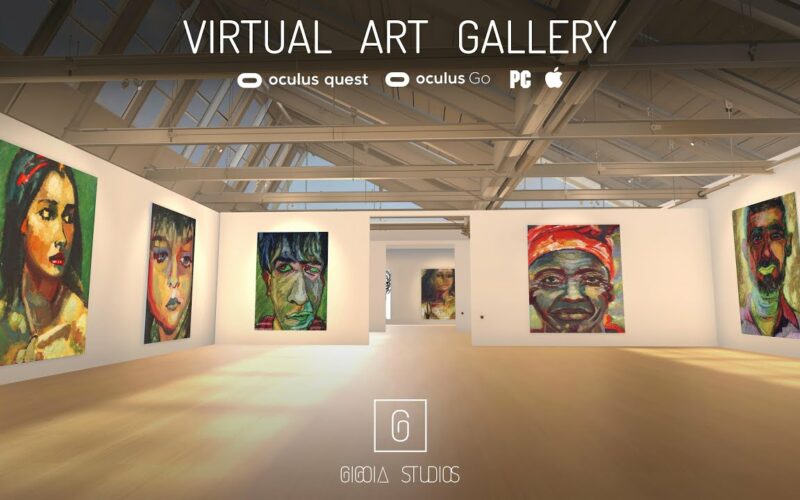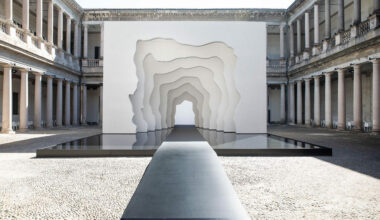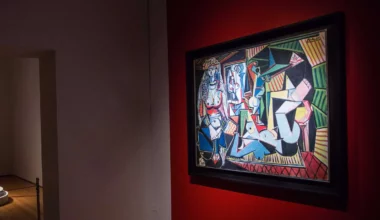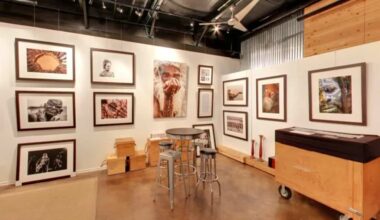Exhibiting art, both publicly and privately, has always been an important facet of the art world; it is often how artists secure funding and patrons, but it is also an opportunity for people to appreciate art up close, whether they are looking to buy or simply admire. Public art galleries are used to display a cross section of art produced in a particular time or place, or simply one single ‘collection’, gathered either by an individual or an organisation. Art fairs, however, can refer to several different things. They are either specifically for the buying and selling of art that has been put on the market, or they are festivals acting as temporary public exhibitions.
So, what happens when these events and exhibitions are moved online? This may happen for a variety of reasons, but the number one benefit is accessibility. Just as we might now turn to online platforms like Poker Casino to play traditional table games, or MetaCritic to listen to a newly released album, we can also turn to the internet for our art fix. Curating an online art exhibition means that the pieces included (or their image at least), can be accessed by anybody with an internet connection, from all over the world. So if you can’t make it over to New York in time to catch the Goya exhibition at the Met, you can view it online instead. Perfect!
With that in mind, read on for a few of our favourite art fairs and exhibitions from recent years.
Art Fairs
The Affordable Online Art Fair
The Affordable Art Fair was first dreamt up in 1999 in order to make art available to buy for absolutely everyone, rather than just a select few. Since then, physical fairs have taken place in cities as diverse as London, Hong Kong, Amsterdam and Sydney. Prices started at the low amount of £50, and artworks ranged from paintings to silkscreen prints to photography. Numerous art galleries got involved from countries all over the world, making their pieces available for the global public to buy. There was even the usual roster of events for (virtual) attendees, including a quiz, tours and talks from experts, the Fair’s founders and artists themselves.
Frieze Viewing Room
Readers of this blog may already be familiar with the Frieze Art Fair, usually held in both New York, USA and London, UK. However, last year Frieze went online. The fair did a fantastic job of displaying all of the artwork up for sale in a digitized version of an art gallery, including ‘like’ buttons for each piece, clear pricing and info to the right of the screen, and even an online guest book that virtual visitors could sign. It also provided audio-visual interviews with collectors, artists, and organisers, allowing visitors to get up close and personal not just with the art itself, but also the minds behind the exhibit. Many people even expressed how they actually preferred the ease and accessibility of the online fair compared to the sometimes fraught atmosphere of the in-person sale.
Art Exhibitions
White Cube
There are White Cube galleries located in London, Paris, Hong Kong, New York and Florida. They all do exactly what you’d expect from the name, providing a white cube of exhibition space where modern artists can display their work and where the public can then come and admire them. Last year, the White Cube group curated an online exhibition, Rear Window, named after the 1954 Hitchcock film. It included photography and paintings all centred around the theme of looking and ‘the gaze’. Fitting, considering that the entire exhibit was curated for a viewing audience, rather than one that would be experiencing the works physically in a bricks-and-mortar gallery setting.
The Artling
In a slight departure from the choices mentioned so far, The Artling is an entirely online art gallery that has no physical gallery location. There is a private viewing space located in Shanghai, but it is not an art gallery in the traditional sense of the word. With a focus on contemporary art and design, the agency both facilitates sales between artist and collector, and provides visual exhibitions for enthusiasts to browse from their desktops. The Artling stable currently houses over 3000 artists, so there is plenty to look at and art can be viewed according to medium, style, price or artist. There is also a ‘Trending’ section of the website, so that you can have a nosy at what everybody else is interested in at the moment. It’s a great resource that has really made the most out of the digital medium.







